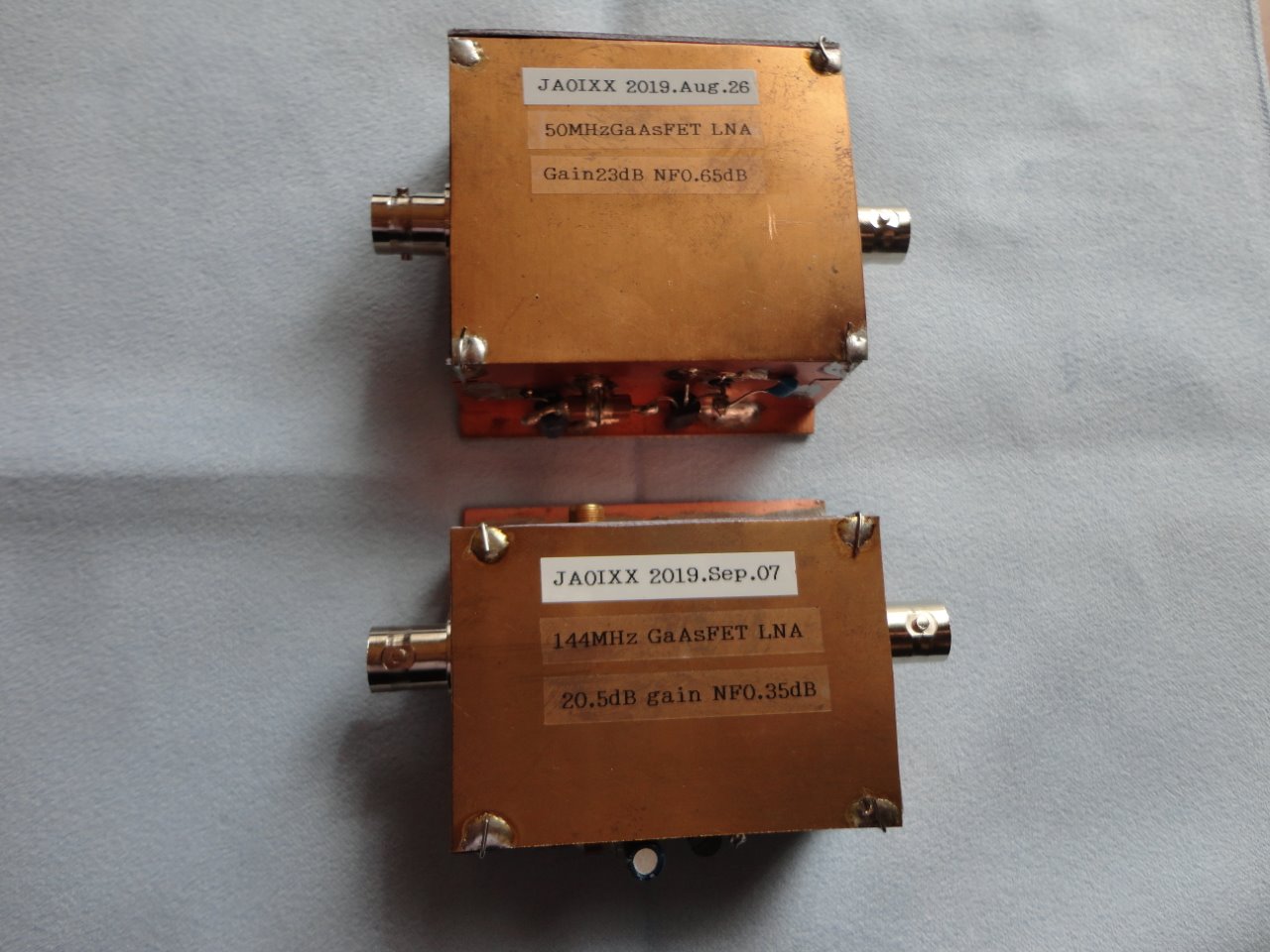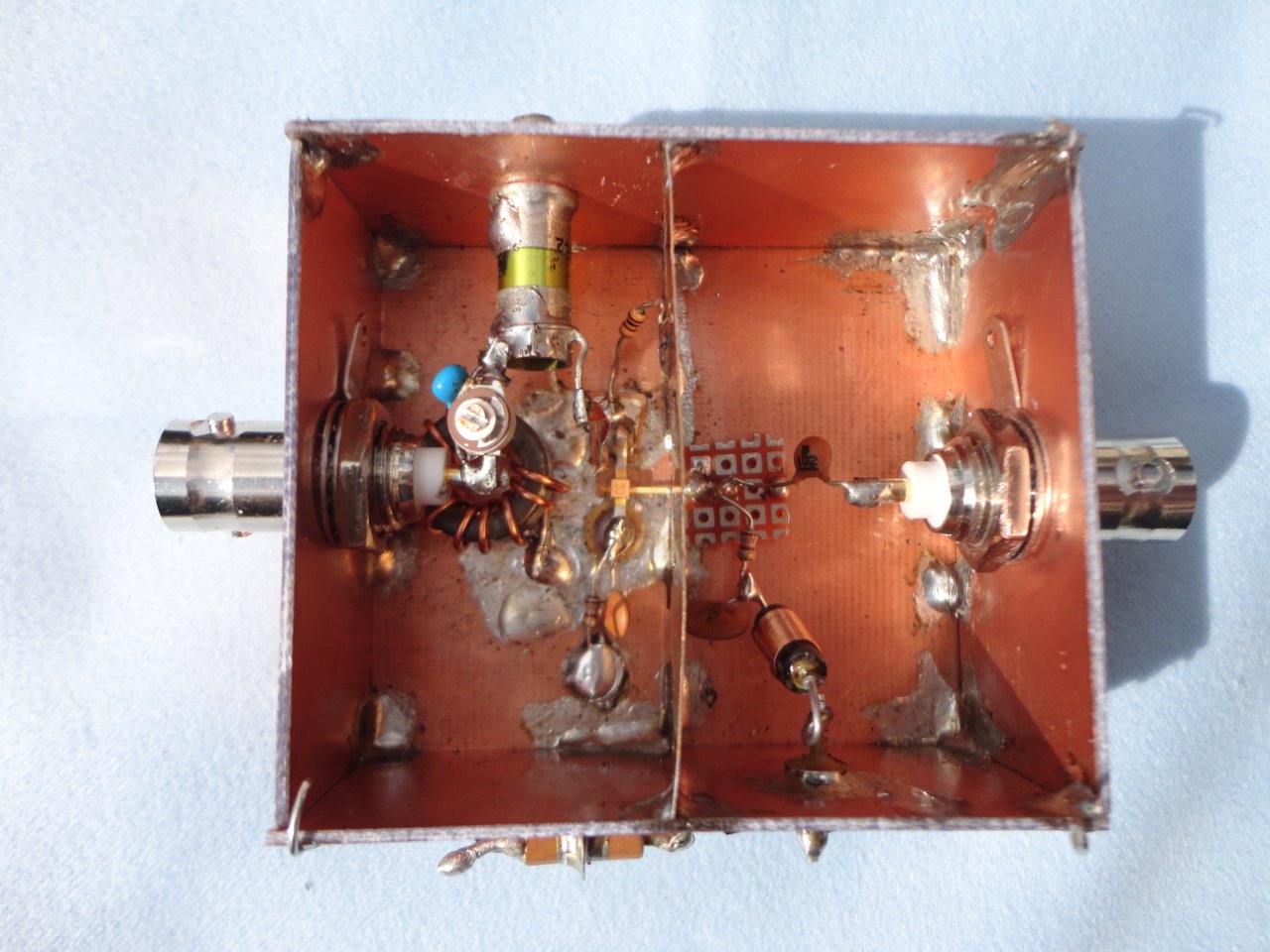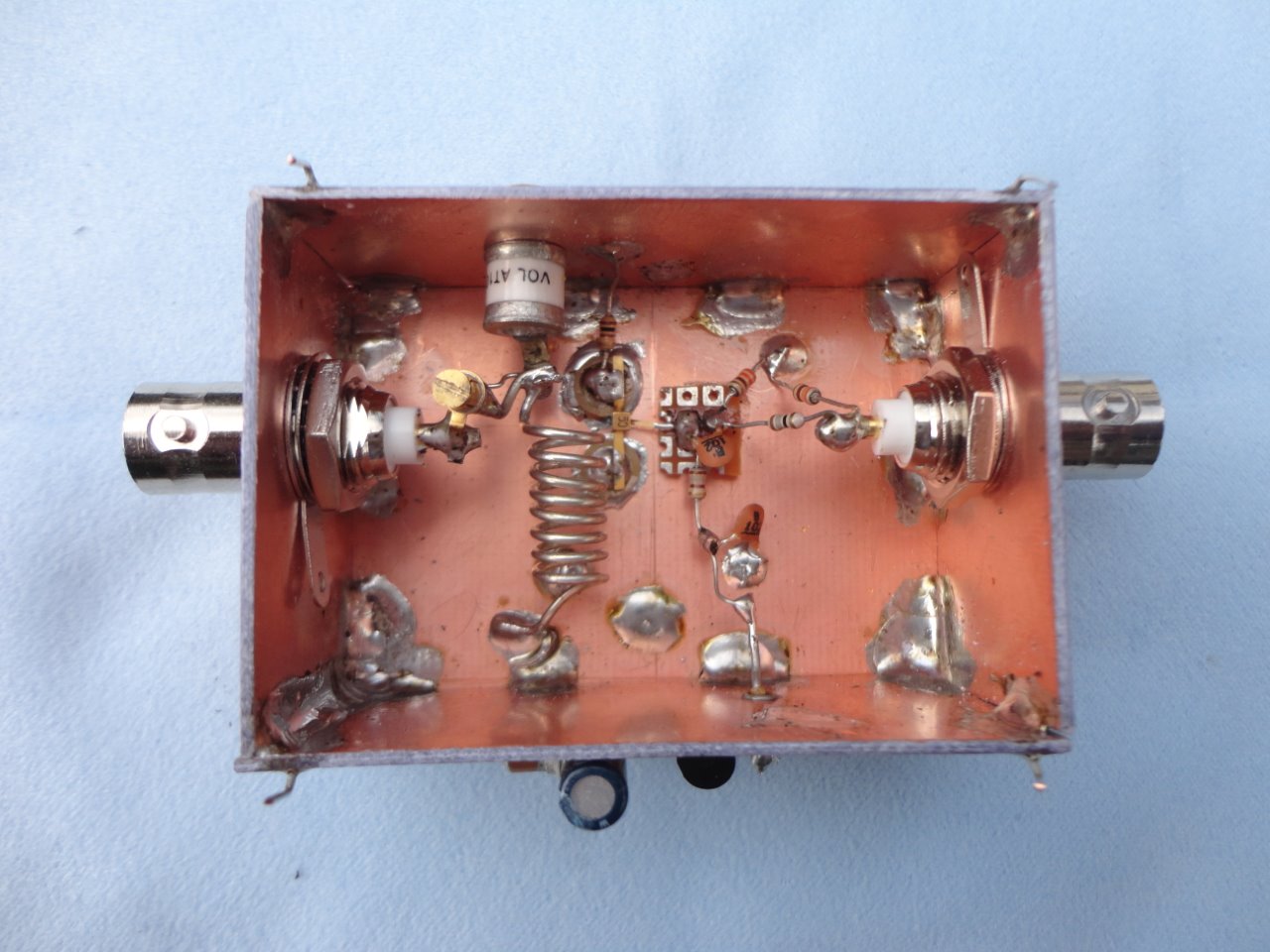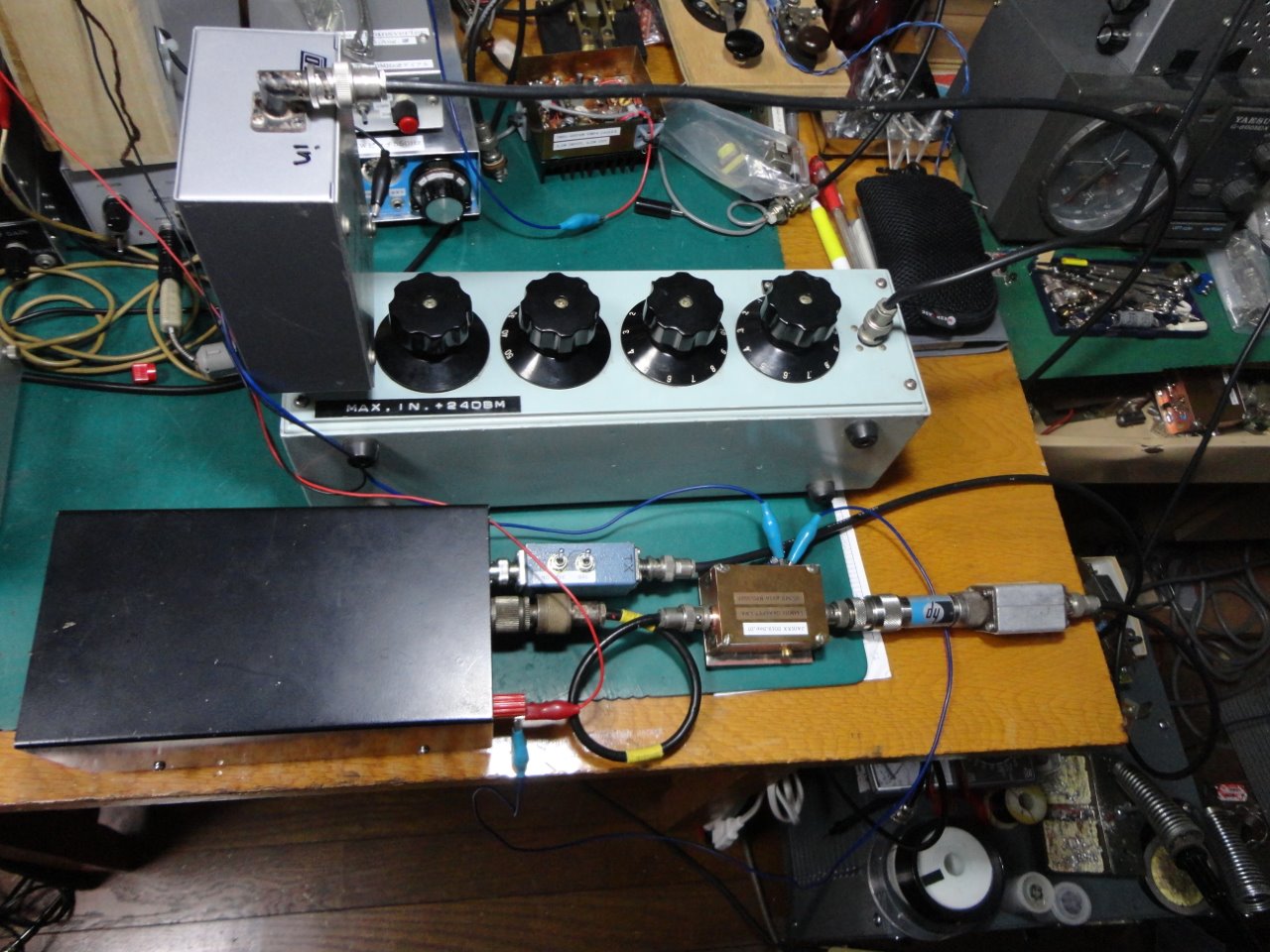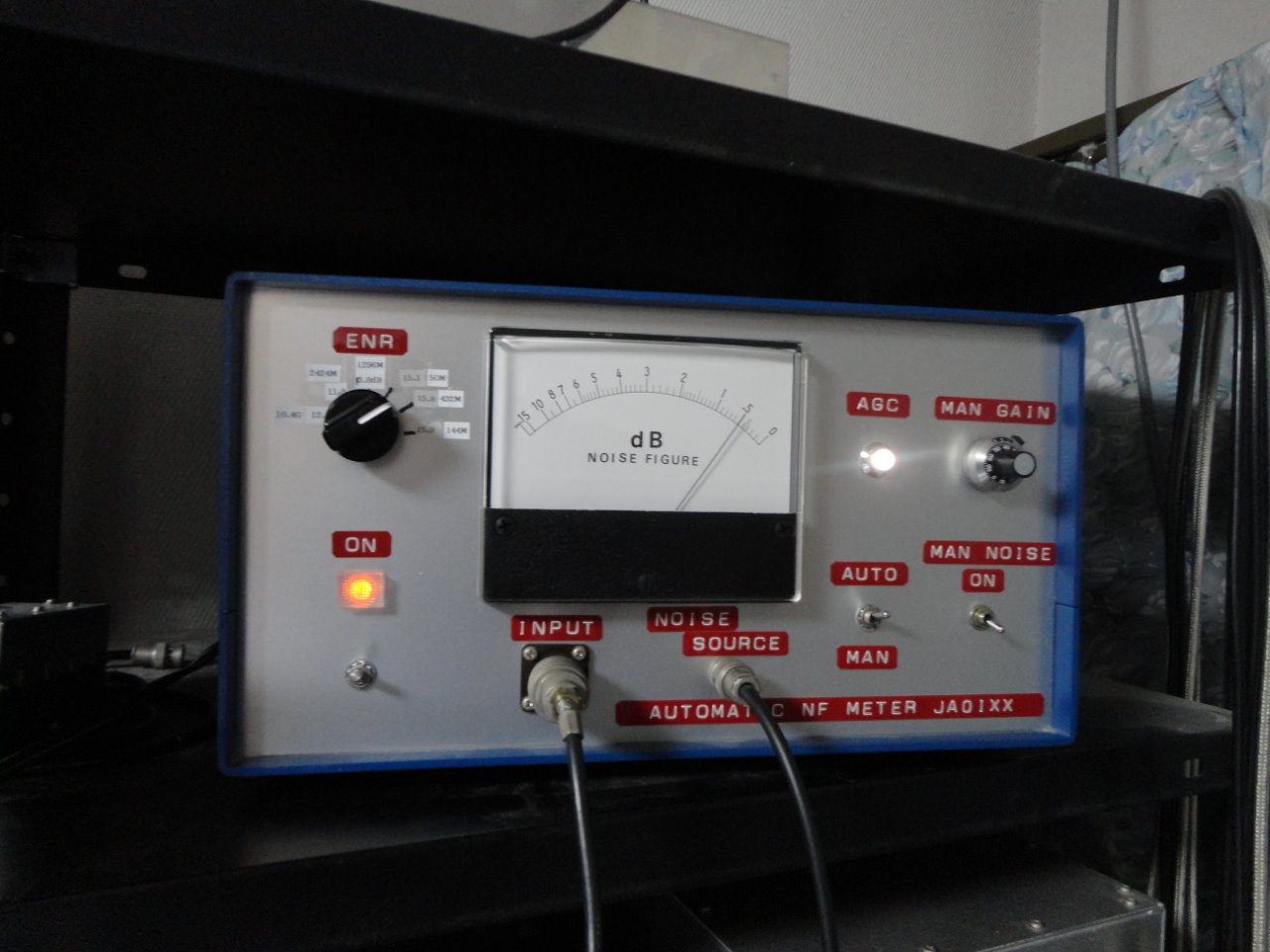80年代にはGaAs FETプリアンプを何台も作ったが、どれも432MHzや1296MHzのEME用でVHF用は製作したことが無かった。今回NF測定ベンチ用にレファレンスが必要になったので、ストックしていた三菱のMGF1412(電波天文用の選別品)で6mと2m用を作ってみた。
最初はドレインに4: 1のトランスを入れる定番のW6POタイプで27~28dBのゲインを得たが、50MHzのNF調整中に発振を起こしFETを一本飛ばしてしまった。そこでドレイン負荷を純抵抗180Ωに変更し、出力は1000pF
を介してドレインから50Ωラインに直接つないだところ、両バンドともゲイン23dBに。動作は安定しており、シールド板を外しても発振を起こす気配は全くない。
入力タンク回路の調整により、144MHzの雑音指数は狙いの0.4dBまで気持ち良く下がったが、もう一方の6mはなかなか難しくて0.7dBを切るのがやっとのレベル。コイルのターン数は11t~13tまで振っても鈍感で大差なし。50MHzにおけるΓoptは公表されていないのでこれは推測だが、Kent/WA5VJBが書いたように単純なLマッチあるいは普通のリンクコイル結合の方が良いのかもしれない。
EMEのように限界ギリギリまで雑音温度を削る場合はさておき、バンド内に強信号の多い地上通信に使うならオーバーゲインは禁物。出力部にATTを置くなどして運用するのが良いと思う。
GaAs MES-FET 50MHz LNA :gain 23dB NF0.65dB, 144MHzLNA :gain23.5dB NF0.4dB,
making is in 2019
These are GaAs MES-FET LNAs for 144MHz and 50MHz. Stocked old but excellent
Mitsubishi transistors sorted out especially for the radio observatory
were taken out and applied to these amplifiers.
The famous W6PO’s style (4:1 transformer) gives more than 27dB of gain
on each band nicely. But I experienced unstable oscillation on 6m to find
the FET blown, so I changed the drain load to a pure resistor of 180Ω to
get stable 23dB of gain on both band. The noise figure is 0.4dB of expected
level on 2m, but it didn't go down smoothly on 6m, and 0.65dB was best.
Γopt on 50MHz isn't published. I guess the simple L-matching or usual link
coil coupling may be a good way as Kent/WA5VJB mentioned before.
When you reduce the noise temperature to the limit like EME, much gain
of LNA is inevitable. However, if the LNA is used for the ground wave communication
with a lot of strong signals in the passband, the excessive gain is harmful.
I think it's good to put several dB of ATT in the output portion to adjust
the gain.
GaAs MES-FET 50MHz LNA :gain 23dB NF0.65dB, 144MHzLNA :gain23.5dB NF0.4dB
, making is in 2019

